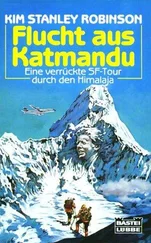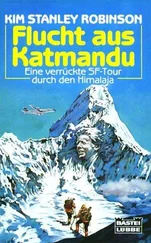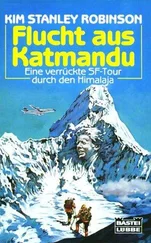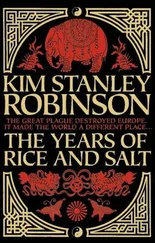Kim Robinson - Escape from Kathmandu
Здесь есть возможность читать онлайн «Kim Robinson - Escape from Kathmandu» весь текст электронной книги совершенно бесплатно (целиком полную версию без сокращений). В некоторых случаях можно слушать аудио, скачать через торрент в формате fb2 и присутствует краткое содержание. Год выпуска: 1986, Жанр: Фантастика и фэнтези, на английском языке. Описание произведения, (предисловие) а так же отзывы посетителей доступны на портале библиотеки ЛибКат.
- Название:Escape from Kathmandu
- Автор:
- Жанр:
- Год:1986
- ISBN:нет данных
- Рейтинг книги:4 / 5. Голосов: 1
-
Избранное:Добавить в избранное
- Отзывы:
-
Ваша оценка:
- 80
- 1
- 2
- 3
- 4
- 5
Escape from Kathmandu: краткое содержание, описание и аннотация
Предлагаем к чтению аннотацию, описание, краткое содержание или предисловие (зависит от того, что написал сам автор книги «Escape from Kathmandu»). Если вы не нашли необходимую информацию о книге — напишите в комментариях, мы постараемся отыскать её.
in Sep 1986. Later published as part of
collection (Tor Books, 1989).
Escape from Kathmandu — читать онлайн бесплатно полную книгу (весь текст) целиком
Ниже представлен текст книги, разбитый по страницам. Система сохранения места последней прочитанной страницы, позволяет с удобством читать онлайн бесплатно книгу «Escape from Kathmandu», без необходимости каждый раз заново искать на чём Вы остановились. Поставьте закладку, и сможете в любой момент перейти на страницу, на которой закончили чтение.
Интервал:
Закладка:
As you may or may not remember, I got my Master’s in Zoology at U.C. Davis soon after you left, and I put in more years than I care to recall on a Ph.D. there before I got disgusted and quit. I wasn’t going to have anything more to do with any of that, but last fall I got a letter from a friend I had shared an office with, a Sarah Hornsby. She was going to be part of a zoological/botanical expedition to the Himalayas, a camp modeled on the Cronin expedition, where a broad range of specialists set up near treeline, in as pure a wilderness as they can conveniently get to. They wanted me along because of my “extensive experience in Nepal,” meaning they wanted me to be sirdar, and my degree didn’t have a thing to do with it. That was fine by me. I took the job and went hacking away at the bureaucratic underbrush in Kathmandu. You would have done it better, but I did okay. Central Immigration, Ministry of Tourism, Forests and Parks, RNAC, the whole horrible routine, which clearly was designed by someone who had read too much Kafka. But eventually it got done and I took off in the early spring with four animal behaviorists, three botanists, and a ton of supplies, and flew north. We were joined at the airstrip by 22 local porters and a real sirdar, and we started trekking.
I’m not going to tell you exactly where we went. Not because of you; it’s just too dangerous to commit it to print. But we were up near the top of one of the watersheds, near the crest of the Himalayas and the border with Tibet. You know how those valleys end: tributaries keep getting higher and higher, and finally there’s a last set of box canyon-type valleys fingering up into the highest peaks. We set our base camp where three of these dead-end valleys met, and members of the group could head upstream or down depending on their project. There was a trail to the camp, and a bridge over the river near it, but the three upper valleys were wilderness, and it was tough to get through the forest up into them. It was what these folks wanted, however—untouched wilderness, almost.
When the camp was set the porters left, and there the eight of us were. My old friend Sarah Hornsby was the ornithologist—she’s quite good at it, and I spent some time working with her. But she had a boyfriend along, the mammalogist (no, not that, Freds), Phil Adrakian. I didn’t like him much, from the start. He was the expedition leader, and absolutely Mr. Animal Behavior—but he sure had a tough time finding any mammals up there. Then Valerie Budge was the entomologist—no problem finding subjects for her, eh? (Yes, she did bug me. Another expert.) And Armaat Ray was the herpetologist, though he ended up helping Phil a lot with the night blinds. The botanists were named Kitty, Dominique, and John; they spent a lot of time to themselves, in a large tent full of plant samplings.
So—camp life with a zoological expedition. I don’t suppose you’ve ever experienced it. Compared to a climbing expedition it isn’t that exciting, I’ll tell you. On this one I spent the first week or two crossing the bridge and establishing the best routes through the forest into the three high valleys; after that I helped Sarah with her project, mostly. But the whole time I entertained myself watching this crew—being an animal behaviorist for the animal behaviorists, so to speak.
What interests me, having once given it a try and decided it wasn’t worth it, is why others carry on. Following animals around, then explaining every little thing you see, and then arguing intensely with everyone else about the explanations—for a career? Why on earth would anyone do it?
I talked about it with Sarah, one day when we were up the middle valley looking for beehives. I told her I had formed a classification system.
She laughed. “Taxonomy! You can’t escape your training.” And she asked me to tell her about it.
First, I said, there were the people who had a genuine and powerful fascination with animals. She was that way herself, I said; when she saw a bird flying, there was a look on her face… it was like she was seeing a miracle.
She wasn’t so sure she approved of that; you have to be scientifically detached, you know. But she admitted the type certainly existed.
Then, I said, there were the stalkers. These people liked to crawl around in the bush tailing other creatures, like kids playing a game. I went on to explain why I thought this was such a powerful urge; it seemed to me that the life it led to was very similar to the lives led by our primitive ancestors, for a million long years. Living in camps, stalking animals in the woods: to get back to that style of life is a powerfully satisfying feeling.
Sarah agreed, and pointed out that it was also true that nowadays when you got sick of camp life you could go out and sit in a hot bath drinking brandy and listening to Beethoven, as she put it.
“That’s right!” I said. “And even in camp there’s quite a night life, you’ve all got your Dostoevski and your arguments over E.O. Wilson… it’s the best of both worlds. Yeah, I think most of you are stalkers on some level.”
“But you always say, ‘you people,’ ” Sarah pointed out to me. “Why are you outside it, Nathan? Why did you quit?”
And here it got serious; for a few years we had been on the same path, and now we weren’t, because I had left it. I thought carefully about how to explain myself. “Maybe it’s because of type three, the theorists. Because we must remember that animal behavior is a Very Respectable Academic Field! It has to have its intellectual justification, you can’t just go into the academic senate and say, ‘Distinguished colleagues, we do it because we like the way birds fly, and it’s fun to crawl in the bushes!’ ”
Sarah laughed at that. “It’s true.”
And I mentioned ecology and the balance of nature, population biology and the preservation of species, evolution theory and how life became what it is, sociobiology and the underlying animal causes for social behavior… But she objected, pointing out that those were real concerns.
“Sociobiology?” I asked. She winced. I admitted, then, that there were indeed some excellent angles for justifying the study of animals, but I claimed that for some people these became the most important part of the field. As I said, “For most of the people in our department, the theories became more important than the animals. What they observed in the field was just more data for their theory! What interested them was on the page or at the conference, and a lot of them only do field work because you have to prove you can.”
“Oh, Nathan,” she said. “You sound cynical, but cynics are just idealists who have been disappointed. I remember that about you—you’re such an idealist!”
I know, Freds—you will be agreeing with her: Nathan Howe, idealist. And maybe I am. That’s what I told her: “Maybe I am. But jeez, the atmosphere in the department made me sick. Theorists backstabbing each other over their pet ideas, and sounding just as scientific as they could, when it isn’t really scientific at all! You can’t test these theories by designing an experiment and looking for reproducibility, and you can’t isolate your factors or vary them, or use controls—it’s just observation and untestable hypothesis, over and over! And yet they acted like such solid scientists, math models and all, like chemists or something. It’s just scientism.”
Sarah just shook her head at me. “You’re too idealistic, Nathan. You want things perfect. But it isn’t so simple. If you want to study animals, you have to make compromises. As for your classification system, you should write it up for the Sociobiological Review ! But it’s just a theory, remember. If you forget that, you fall into the trap yourself.”
Читать дальшеИнтервал:
Закладка:
Похожие книги на «Escape from Kathmandu»
Представляем Вашему вниманию похожие книги на «Escape from Kathmandu» списком для выбора. Мы отобрали схожую по названию и смыслу литературу в надежде предоставить читателям больше вариантов отыскать новые, интересные, ещё непрочитанные произведения.
Обсуждение, отзывы о книге «Escape from Kathmandu» и просто собственные мнения читателей. Оставьте ваши комментарии, напишите, что Вы думаете о произведении, его смысле или главных героях. Укажите что конкретно понравилось, а что нет, и почему Вы так считаете.












